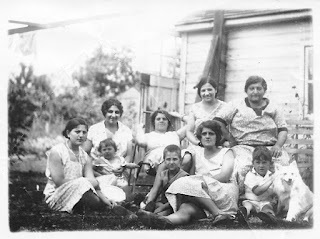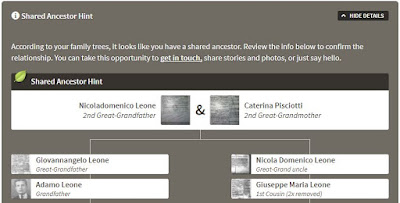In my last article, I mentioned how tough it was to find the names of my 4th great grandmother's parents. She was Apollonia Grazia Caruso. Here's what I knew about her when I set out to find her parents:
- Born around 1775, Apollonia had three children in the town of Circello, Benevento, Campania, Italy between 1809 and 1813.
- Her son Francesco Saverio Liguori, my 3rd great grandfather, married in the next town, Colle Sannita, in 1840.
- Her husband, my 4th great grandfather Gregorio Liguori, died in Circello in 1814. He and Apollonia had three children under the age of 10 at the time.
Apollonia's death record was missing from Francesco Saverio's 1840 marriage documents. Instead, a long letter testified, "Yes, she is dead, but we don't remember when she died. It was a long time ago."
The town clerk wrote that he couldn't find her death record because he didn't know which years to search. That meant I couldn't find her death date or her parents' names.
What would you do next?
I turned to my knowledge of these small towns in the province of Benevento in the 1800s. I've documented thousands of birth, marriage and death records from the area.
I learned that in my rural, ancestral hometowns in the 1800s:
- Couples married at the average age of 25.
- They had a child about every other year until the wife was in her mid-forties.
- When one spouse died, the survivor remarried within a couple of years.
With this in mind, I examined what I knew. Apollonia's husband died when she was about 40 years old. She had three small children. She needed to remarry.
Her husband died in December 1814, so I looked at the 1815 marriage records for Circello. No Apollonia.
I looked at the 1816 records, and there she was. At the age of 44, Apollonia married Salvatore delGrosso. He was a 66-year-old widower from Colle Sannita. As a tailor, he was most likely able to give her a better life than she had before.
Their marriage records finally gave me the names of the 5th great grandparents I was searching for. Francesco Caruso and Francesca d'Andrea were born around 1750.
 |
| The facts I had about her family led me to discover more about Apollonia. |
Apollonia died in Colle Sannita only six years after her second marriage. Her children were ages 13, 11 and nine. I can only hope that their elderly step-father continued to care for the children.
I know Francesco Saverio, the youngest child, grew up, married and had children. I plan to search the Colle Sannita death and marriage records for his sisters.
Isn't it amazing how many things had to align for you to be born?
If Apollonia hadn't become a widow and married a man from another town:
- My 3rd great grandparents might never have married.
- They wouldn't have had a daughter named Maria Giuseppa Liguori.
- She wouldn't have had a daughter named Libera Pilla.
- Libera wouldn't have married Francesco Iamarino—my grandfather's father.
Thanks to the hours I spend examining old Italian vital records, I learned about these people. I knew I had to search for Apollonia's second marriage soon after her first husband died.
Here's your challenge.
Learn all you can about your ancestral hometown through its vital records. Don't search only for specific people. Take the time to look at the surrounding documents. Look for patterns and facts.
Act like a detective and think about what your ancestor might have done. This tactic could help you find those missing names—or solve that family mystery.
























